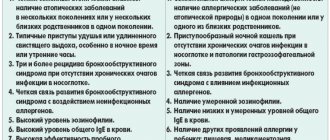It is worth explaining what a cold is. The mucous membrane of the nasopharynx is a sensitive organ that reacts to any change in the usual temperature. When we go out into the cold, it reacts with mild swelling to prevent hypothermia. But if a person is in the cold for a long time, the swelling increases, a sore throat and nasal discharge may appear. This is the beginning of the cold process.
A significantly cooled body is more vulnerable to viruses. The person caught a cold, and the next morning - headache, fever, cough, runny nose. Viruses have already tried their best here. Therefore, the cold is considered globally, as part of ARVI. Among the viruses are adenoviruses, rhinoviruses, the well-known flu and many others.
Quite often, viral infection provokes the development of a bacterial infection. In this case, they speak of a complication of a viral disease. The body is weakened, the immune system is no longer strong enough to fight, and bacteria easily penetrate the body. In addition, dormant bacteria already present in the body wake up and begin their work.
Many people do not understand the difference between acute respiratory viral infections and acute respiratory infections - an acute respiratory disease. In fact, there is not much difference. It’s just that doctors prefer to diagnose ARVI when they are sure that the original causative agent of the infection is a virus. ARI is diagnosed when there is no certainty that the virus is to blame, and there is a suspicion of bacterial infection1.
Causes of colds in adults
The source of the disease is a sick person who spreads the infection further. However, the routes of infection are different. The most common route is airborne2. Next comes tactile infection, since viruses can remain on any object touched by the infected person.
It is worth noting that viruses tend to concentrate. This means that it is much easier for a healthy person to become infected indoors, rather than standing with a sick person “in the middle of the field.” Viruses reliably remain viable for several days, especially in an unventilated area2.
Once in the body, the virus begins to actively multiply, moving deeper and deeper. A person himself becomes a source of infection for other people. Especially for those who have problems with immunity, for the elderly, for children, for those who have already caught a cold or are sick with other diseases2.
How exactly does the virus manifest itself, and what stages does the disease go through? There are four main phases of infectious respiratory infection:
- The pathogenic virus enters the body through the respiratory system and attaches to the cells of the mucous membranes. At this stage the person does not notice anything.
- The pathogen enters the blood. The body feels the invasion, the immune system begins to work, symptoms of intoxication appear in the body - weakness, malaise, fever, etc.
- The virus finds a place in the body where it is most comfortable and creates a focus of inflammation. At this stage, a person begins to have a cough, sore throat, severe runny nose and other symptoms.
- The fourth stage marks the conclusion. Either the source of infection develops into a complication and another form of the disease, or the body copes with the virus. Recovery comes1.
Why does the body weaken its protective functions?
According to the explanatory dictionary, the word “cold” is “an illness caused by cooling the body.” In English, the word “cold” means both “cold” and “cold.” According to statistics, colds and flu epidemics have a pronounced seasonality 4Read more in the source, so it is no coincidence that it is in the fall and winter, during the coldest and rainiest time of the year, that search engine analysts record a frequent request on the Internet: “what to do if you constantly have a cold?” 5Read more in the source.
Studies show a connection between the increase in the number of colds not only with air temperature, but also with humidity: dry conditions in heated rooms are more favorable for the spread of viruses. In addition, in winter the days are shortened, we receive less sunlight, and it is necessary for the production of “immune” vitamin D 6Read more in the source. This is another reason for weakened immunity.
But the main culprit of colds is not cold, but viruses. It’s just that in some conditions it is more difficult for them to be transmitted, in others it is easier. Most of these conditions - favorable or unfavorable for immunity - depend on us.
Factors influencing the vulnerability of the immune system:
- Poor nutrition.
Microbiota, that is, the totality of all microorganisms in the intestines, is one of the body’s protective barriers. It directly depends on the products we consume. If the balance is disturbed, it is more difficult for the immune system to perform its functions 7Read more in the source. - Neglecting walks in the fresh air.
The likelihood of catching a cold in a warm, crowded room is greater than outside in the cold, keeping a distance from other people. Indoor air is less renewable 8Read more in the source, and it is also dry, which dries out the mucous membranes. As a result, their protective function may be reduced. - Stress, fatigue.
Stress also undoubtedly affects human immunity. Stress can be psychological, for example, caused by overly stressful work or unpleasant events in life, or it can have biochemical causes 9Read more in the source. The first can be caused by nervous overstrain, the second by illness or poor nutrition. - Sedentary lifestyle.
Most studies show that a sedentary lifestyle weakens the body and increases the risk of colds and flu 10Read more in the source.
Symptoms of acute respiratory infections in adults
There are many symptoms for each individual viral and bacterial infection. But there are general signs of acute respiratory infections in adults, which can be used to judge the onset of the disease:
- Runny nose. Everyone is familiar with a runny nose, during which it is difficult to breathe through the nose and there is copious discharge. Often the cause is a viral disease, but a bacterial infection is also possible against the background of a general weakening of the body. If you have a runny nose, rhinitis, sinusitis, or their complications are diagnosed.
- Cough. The usual state. Cough varies in severity and is accompanied by pain or soreness. This is an extremely varied symptom in which laryngitis, bronchitis, tracheitis, as well as diseases of the larynx, trachea or bronchi can be diagnosed.
- Temperature increase. Mild forms of colds can pass without fever, but this is not always good. The temperature shows that the immune system is fighting off invaders. But a temperature above 38ºC requires close attention from the patient and doctors. High fever is typical for influenza viruses.
- General weakness and headache are a consequence of intoxication of the body and are very characteristic of a cold.
Viruses tend to invade a specific location in the body and develop there. The initial focus of infection may be in the mucous membrane of the nose or throat. This is where specific respiratory diseases originate - sinusitis, rhinitis, tracheitis, bronchitis, laryngitis, tonsillitis, pharyngitis and others1.
Myths about ARVI that everyone has encountered
Myth 1. The cause of colds is cold weather, wind and hypothermia
A few decades ago, it was believed that the cause of colds was hypothermia. You went outside, got cold, and now you’re lying there, suffering from a sore throat and blowing your nose. But if you wear a hat with the onset of the first cold weather, dress warmly and don’t eat ice cream outside in winter, that means you’re not afraid of colds and you don’t need to visit doctors and pharmacies, right?
No not like this. Of course, hypothermia weakens local immunity, which pathogenic microorganisms immediately rush to take advantage of, but this is not the main reason for the development of ARVI. With the onset of autumn and colder temperatures, we all spend more time indoors, where infections are literally in the air and on all surfaces. As the pandemic shows and doctors say, even masks do not always protect against infection. Some types of viruses have incredible survivability and can live for several days in the external environment.
The first thing that needs to be done in order to prevent mass infections of colds in crowded rooms is to ventilate them more often. This reduces the concentration of viral particles in the air that everyone breathes. You also need to wash your hands more often, eat right, move more and try to lead a healthy lifestyle.
Myth 2. The colder the climate, the easier it is to catch a cold.
The second one follows from the first myth. If cold weather in autumn, winter and spring, slush and piercing wind can still, to some extent, cause the development of acute respiratory infections, maybe for the sake of your health and the well-being of your child, you should permanently move to where the winters are warm, or even hot?
Also no. And that's why. Of course, you can move to the land of eternal summer, but this will not protect you from catching a cold. As American scientists have found, the population of countries with a dry and warm climate may encounter ARVI even more often than residents of the northern regions. The thing is that dry and warm air dries out the nasal mucosa and deprives it of its protective barrier. But the entry gate and location for colds and flu are precisely the upper respiratory tract, where intensive reproduction of viral particles is observed in epithelial cells. Viruses and bacteria, getting on the defenseless mucous membrane, immediately penetrate into it and begin their vigorous activity.
As a result, sneezing and coughing haunt people even where there is never frost or snow, and you can swim in the sea or ocean all year round. In order to try to protect yourself from infection in countries with warm and dry climates, when going outside, you need to lubricate your nasal passages with an antiviral gel, which can trap viruses and prevent them from entering the body. The same gel is suitable for preventing infection with acute respiratory infections in the northern regions. For example, you can choose VIFERON Gel, which contains recombinant interferon alpha-2b and has immunomodulatory, antiviral and antiproliferative properties. It suppresses the replication of RNA and DNA viruses, has a prolonged effect and is suitable for adults, including pregnant women, as well as for children from the first days of life.
Myth 3: Vitamin C can prevent colds
Of course, proper nutrition, eating enough vegetables and fruits containing essential vitamins, including C, can strengthen the immune system and, to some extent, protect against infection. Vitamin complexes from trusted manufacturers, which are prescribed by a doctor and recommended to be tested before taking them, can also bring considerable benefits. However, unfortunately, healthy food products, vitamins and dietary supplements from the pharmacy are not able to 100% protect us from ARVI infection.
For a certain period of time, pharmacologists had high hopes for vitamin C and tried to prove that this vitamin was capable of destroying viruses that had entered the body. In the 70s of the last century, American chemists presented reports to the scientific world, from which it followed that taking ascorbic acid in large quantities will protect a person from acute respiratory infections even if the disease is already in the development stage. Unfortunately, further research has shown that vitamin C is still not able to stop the development of colds and flu.
Myth 4. If you have a cold, you need to drink as much as possible.
There is probably no modern person who, at least once in his life, has not heard the recommendation that it is necessary to drink more liquid and has not read articles about how modern people drink little, and that tea and coffee dehydrate the body. Many experts recommend drinking at least 30 mg of water per 1 kg of weight per day, this figure is the most common.
When you have a cold, it’s even more necessary to drink a lot, a lot of liquid, isn’t it? After all, copious nasal discharge, coughing and other unpleasant symptoms severely dehydrate the body. The deficiency of fluid in the body of a sick person must be constantly replenished, this is true. But, unfortunately, many, in the wake of publications about the need to drink a lot, often overdo it and literally forcefully pour liters of liquid into themselves, worsening their already poor health. Scientists from Australia have recently proven that excessive fluid intake during acute respiratory infections can lead to such a serious condition as cerebral edema.
If a healthy person drinks too much water, there will be no unpleasant consequences. And in an infected person, there is an increased production of antidiuretic hormone, which reduces the excretion of fluid by the kidneys. As a result, all the fluid is retained in the body and is not excreted, filling the internal organs and leading to complications. Excessive fluid intake also leads to the leaching of beneficial salts, which worsens the patient’s condition. Therefore, it is necessary to drink clean warm water, unsweetened juices and tea when you have a cold in moderation, focusing on your feelings.
Myth 5. Colds and flu need not be treated.
This statement is incorrect. Hoping “maybe” very rarely leads to the expected results. This is especially dangerous when it comes to a child. According to modern medical protocols for the treatment of infection, complex therapy for ARVI includes not only symptomatic (medicines for fever, cough, sore throat and runny nose), but also antiviral drugs. And if the first medicines only eliminate the symptoms of a cold without affecting the cause of the disease in any way, then the second ones act on the cause of the disease - directly on the virus itself.
Antiviral drugs that affect the cause of the disease include VIFERON Suppositories, which contain interferon alpha 2b and highly active antioxidant vitamins. It helps block the virus and protect healthy cells from infection.
The drug is available in the form of suppositories - a systemic form that has a therapeutic effect on the entire body as a whole, as well as in the form of ointment and gel.
Suppositories are used to treat adults and children from the first days of life, as well as pregnant women from the 14th week of gestation, the gel is used for adults, including pregnant women, and children of any age without restrictions, ointment is used for adults, pregnant women and children from 1 year.
The recommended dose for adults, including pregnant women and children over 7 years of age is VIFERON 500,000 IU, 1 suppository 2 times a day every 12 hours every day for 5 days. According to clinical indications, therapy can be continued.
Children under 7 years old, incl. newborns and premature infants with a gestational age of more than 34 weeks are prescribed VIFERON 150,000 IU, 1 suppository 2 times a day every 12 hours every day for 5 days. According to clinical indications, therapy can be continued. The break between courses is 5 days.
The inclusion of the drug VIFERON (rectal suppositories) in the complex therapy of acute obstructive bronchitis associated with ARVI in children aged 1–3 years contributed to:
- reducing the duration of fever by 1 day;
- reducing the duration of intoxication symptoms by 1.5 days;
- reducing the duration of nasal discharge by 3 days;
- reducing the duration of cough by 2 days;
- reducing the duration of shortness of breath by 3 days;
- reducing the duration of wheezing in the lungs by 3 days;
- reducing the duration of hard breathing by 3.5 days;
- reducing the duration of hyperemia of the oropharyngeal mucosa by 1.5 days.iii
In order to protect yourself from ARVI, including influenza, you need to apply a strip of gel approximately 0.5 cm long to the nasal mucosa 2 times a day as a preventive measure. Course duration is 2-4 weeks. For the treatment of ARVI and influenza, including those complicated by bacterial infection, the application of VIFERON gel must be repeated 3-5 times a day for 5 days.
For the treatment of influenza and other acute respiratory viral infections, VIFERON Ointment is applied in a thin layer to the mucous membrane of the nasal passages 3 times a day. The amount of the drug is one pea with a diameter of 0.5 cm, the approximate course of treatment is 5 days.
For the treatment of ARVI in children from 1 year to 2 years old, VIFERON Ointment 2500 IU (1 pea with a diameter of 0.5 cm) is used 3 times a day, for children from 2 to 12 years old - ointment 2500 IU (1 pea with a diameter of 0.5 cm) 3 times a day. .5 cm) 4 times a day, for children from 12 to 18 years old - ointment 5000 IU (1 pea with a diameter of 1 cm) 4 times a day. The duration of treatment is 5 days.
Thanks to the original formula, the drug also has a double effect. In addition to its antiviral effect, it helps restore immunity damaged by the disease. Which is no less important than the direct impact on viruses.
VIFERON has high non-selective activity. This activity was discussed above. This means that such drugs can fight most types of acute respiratory viral infections, in some cases without additional tests or specifying the type of virus.
Reference and information material
Author of the article
Shamsheva Daria Sergeevna General practitioner, cardiologist, Ph.D.
Sources:
i https://www.rmj.ru/
ii https://www.amursma.ru/
iii https://pediatriajournal.ru/
Loading...
Take other surveys
Poor immunity is the main cause of colds
The question remains, why does one person get sick, while his neighbor at his desk or seat on public transport remains healthy? It's all about immunity, its condition, readiness and performance.
For the development of a viral disease, three conditions are sufficient:
- Contact with the virus or its carrier;
- Penetration into the body and attachment of the virus (ARVI viruses settle on the nasopharyngeal mucosa);
- Inability of the immune system to cope with it.
Immunity is the main protective barrier. It must prevent the penetration of viruses and bacteria, and when they penetrate, it must successfully cope on its own and better without outside help. Otherwise, the disease will visit the person too often. In such cases, the immune system definitely needs support.
Treatment of acute respiratory infections in adults
Often, when you have a cold, there is a risk of complications. This is why diagnosing a cold is necessary. Typically, after diagnosing the symptoms of acute respiratory infections in adults, treatment includes drug therapy.
In the first days after illness, it is recommended to remain in bed. It is important to ventilate the room more often and reduce the ambient temperature to avoid spreading the virus and infecting others. With any virus, it is necessary to consume a large amount of fluid in order to quickly remove toxins from the body. If the immune system is in order, then it itself is able to cope with the disease, the main thing is not to interfere1.
In case of complications or dangerous viruses, such as influenza, the body requires medicinal support:
- Sore throat is treated by gargling with special solutions, expectorants and emollients.
- Cough is treated with expectorants, antitussives or emollients (depending on the type of cough). Let us note that such a popular folk remedy as “breathing over potatoes” is highly not recommended by experts, since there is a high probability of getting a burn to the mucous membrane. It can also be dangerous at elevated body temperatures.
- At high temperatures, analgesics and NSAIDs (non-steroidal anti-inflammatory drugs) are prescribed.
- To combat viruses, special antiviral drugs are used.
- Immunostimulants are prescribed to help the immune system.
- In case of bacterial infection, local antibacterial drugs are used.
- For nasal congestion, vasoconstrictors and sea water preparations are recommended.
- In especially severe cases, antibiotics are prescribed (under the strict supervision of a specialist).2
How to cure acute respiratory infections in adults
Colds can be treated with various means. But don't forget about immunity. To activate local immunity, the drug IRS ®19, containing bacterial lysates5, can be used.
IRS®19 has been used for many years in the treatment of colds, acute respiratory viral infections or acute respiratory infections. Bacterial lysates activate local immunity, thereby suppressing microorganisms on the mucous membranes of the respiratory system. It becomes harder for new viruses and bacteria to enter the body. The treatment time for colds is reduced when using IRS®194.
How to diagnose colds
- Inspection and collection of complaints will help. Based on the presence of plaque and pustules on the mucous membranes, the doctor suggests the development of a bacterial infection. A swollen and hyperemic throat speaks in favor of a viral nature.
- In any case, laboratory tests help establish an accurate diagnosis: a blood test with determination of the leukocyte formula and ESR;
- swabs from the throat mucosa for culture and determination of sensitivity to antibacterial drugs;
- antigen test for suspected streptococcal infection;
- sputum culture and chest x-ray for prolonged cough.
Prevention of colds in adults
Prevention is easier than cure - this expression is especially true for colds. It is possible to get off the list of people who are often sick. To do this, you need to keep your immune system in good shape, and then you can calmly smile at everyone who coughs.
To prevent colds, you should follow the same therapeutic recommendations:
- Strengthen the immune system through physical exercise and hardening;
- Keep your weight normal;
- Always maintain hygiene: no one has canceled hand washing after going outside;
- Ventilate the premises as often as possible and maintain a comfortable, slightly cool temperature.
An additional remedy in maintaining immunity and protecting against colds can be a medicine - nasal spray IRS®19. The bacterial lysates included in its composition stimulate the immune system to counteract respiratory infections3,5.









